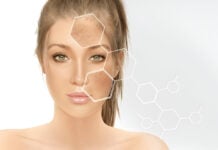Erysipelas is a bacterial skin infection that can affect people of all ages, although it’s more common in older adults and individuals with weakened immune systems. This condition may sound serious and it can be if left untreated but with early diagnosis and the right treatment, most people recover fully.
What Is Erysipelas?
Erysipelas is an infection of the upper layers of the skin and the lymphatic system. It usually causes red, swollen, and painful areas on the skin, often with a clearly defined edge. Most commonly, it appears on the face or legs, but it can occur anywhere on the body.
The infection is usually caused by a type of bacteria called Streptococcus pyogenes, also known as Group A streptococcus. This is the same bacteria responsible for strep throat and impetigo (Wang et al., 2016).
How Does It Happen?
Erysipelas occurs when bacteria enter the skin through a break or crack. This could be something as small as a cut, scratch, insect bite, or even an area of dry, flaky skin. Once inside, the bacteria multiply and cause inflammation and swelling.
People with certain health conditions are more at risk. These include diabetes, obesity, lymphedema (swelling caused by lymph fluid), and circulatory problems. Individuals with weakened immune systems or skin conditions like athlete’s foot or eczema are also more likely to get infected (Stevens et al., 2014).
Symptoms to Watch For
The symptoms of erysipelas often come on suddenly and may include:
- A red, swollen patch of skin that feels warm and tender
- Pain in the affected area
- Fever and chills
- Swollen glands near the infected area
- A raised edge around the red area (a key sign of erysipelas)
On the face, the redness may cover the cheeks and nose in a butterfly-shaped pattern. On the legs, the swelling can become quite severe and even lead to blistering.
Diagnosis and Treatment
Doctors can often diagnose erysipelas just by looking at the skin and asking about symptoms. Sometimes, they may take blood tests or skin samples if the infection is severe or not responding to treatment.
Treatment usually involves antibiotics. Penicillin is the most common and effective antibiotic used to treat erysipelas. If a person is allergic to penicillin, doctors may prescribe other antibiotics like erythromycin or clindamycin (Chlebicki & Oh, 2014). Most people start to feel better within a day or two of starting treatment, although the full course of antibiotics must be completed to prevent the infection from coming back.
In some severe cases, hospitalization might be needed, especially if the person has other medical conditions or if the infection spreads quickly.
Possible Complications
If left untreated, erysipelas can lead to serious complications. These include:
- Abscess formation: A collection of pus that may need to be drained.
- Cellulitis: A deeper skin infection that can spread rapidly.
- Sepsis: A life-threatening condition where the infection enters the bloodstream.
Fortunately, these complications are rare when erysipelas is treated early and properly.
How to Prevent Erysipelas
Preventing erysipelas mostly involves good skin care and hygiene. Here are some practical tips:
- Clean and protect cuts, scrapes, or insect bites promptly.
- Keep the skin moisturized to avoid cracks and dryness.
- Wear well-fitting shoes and socks to prevent blisters and foot injuries.
- Manage chronic conditions like diabetes and skin diseases properly.
- Seek medical attention for persistent skin problems or swelling.
For people who have had erysipelas more than once, doctors might suggest a low-dose antibiotic for several months to prevent recurrence (Stevens et al., 2014).
Living with and After Erysipelas
Dealing with erysipelas can be stressful, especially if it affects your appearance or mobility. But most people recover completely with the right care. Staying informed and proactive about your skin health can make a big difference. If you ever notice red, swollen, painful skin especially if it comes with fever don’t wait. See a healthcare provider promptly.
Erysipelas may look like a simple rash at first, but it’s more than just a skin issue. It’s an infection that needs medical attention. The good news is that it’s highly treatable, especially when caught early. With good hygiene, skin care, and proper management of existing health conditions, you can reduce your risk of developing erysipelas or prevent it from coming back.
References
- Chlebicki, M. P., & Oh, H. M. (2014). Skin and soft tissue infections in adults: Classification, diagnosis, and treatment. Singapore Medical Journal, 55(10), 519–525. https://doi.org/10.11622/smedj.2014187
- Stevens, D. L., Bisno, A. L., Chambers, H. F., Dellinger, E. P., Goldstein, E. J. C., Gorbach, S. L., … & Wade, J. C. (2014). Practice guidelines for the diagnosis and management of skin and soft tissue infections: 2014 update by the Infectious Diseases Society of America. Clinical Infectious Diseases, 59(2), e10-e52. https://doi.org/10.1093/cid/ciu296
- Wang, J., Zhou, W., & Wang, Y. (2016). Clinical features and treatment of erysipelas: A retrospective study of 152 cases. Dermatology Research and Practice, 2016, 1–5. https://doi.org/10.1155/2016/8718140












